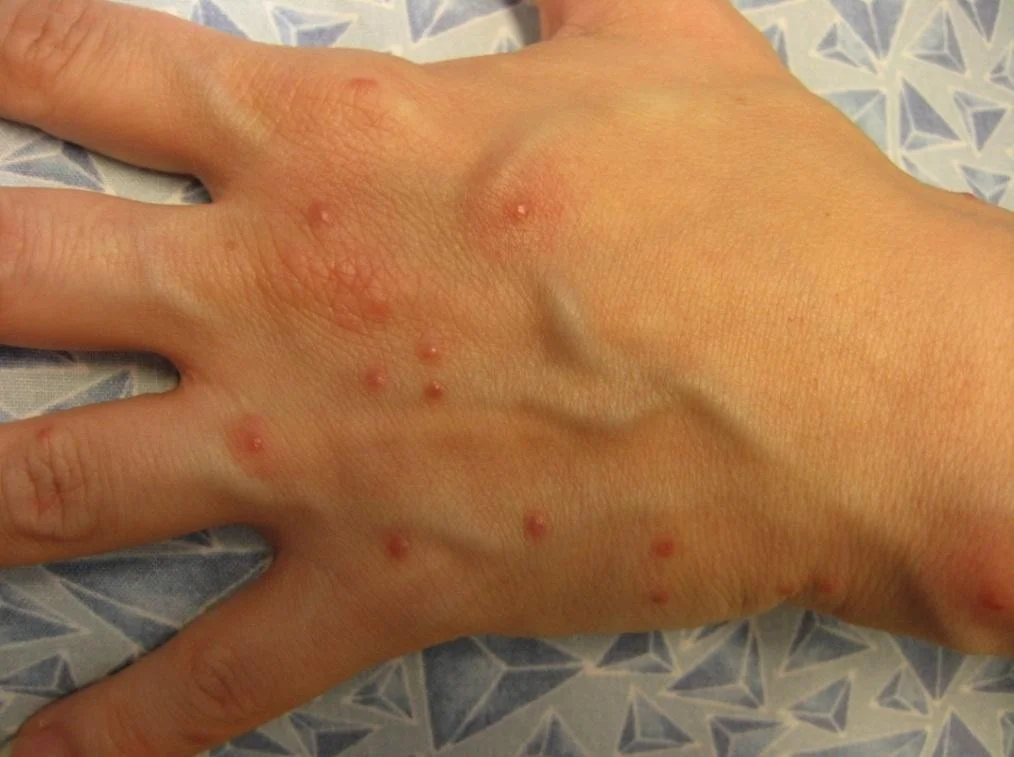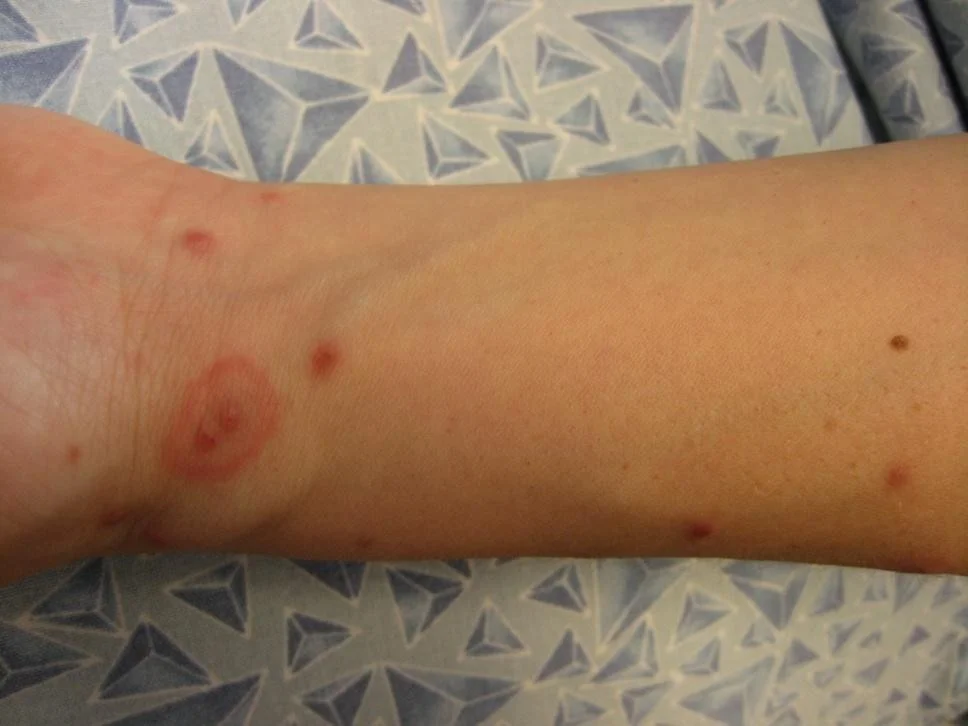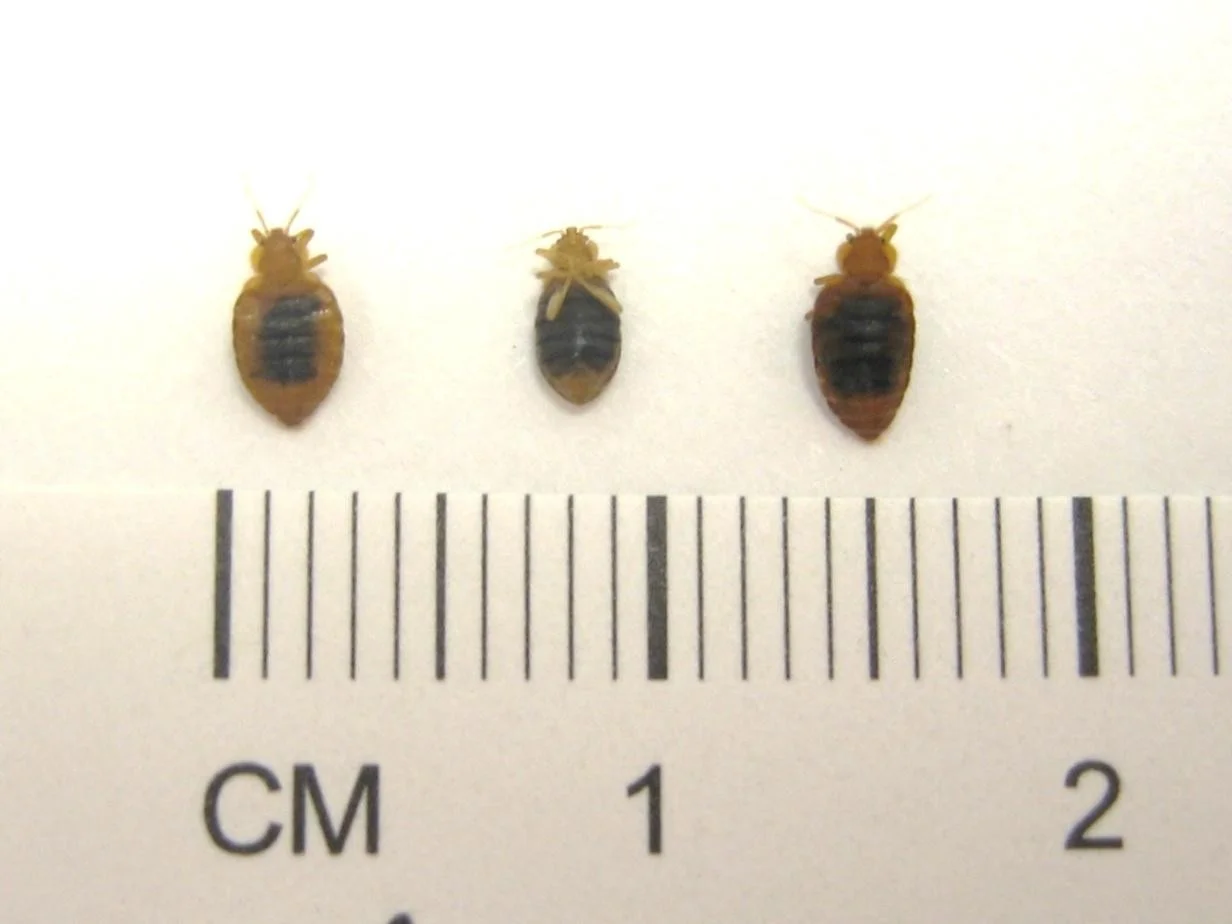Case Three
Case Three: History
- HPI: Mrs. K is a 33-year-old woman who presented to clinic with “itchy bumps” that started over the weekend. No one else at home has a similar complaint.
- PMH: GERD (Gasteroesophageal reflux disease)
- Allergies: none
- Medications: omeprazole
- Family history: noncontributory
- Social history: works in a restaurant
- ROS: negative
Case Three: Skin Exam
Edematous papules scattered over the body, some are excoriated


Case Three: Question 1
What is the most likely diagnosis? a. Bedbug bites b. Brown recluse spider bites (normally single site) c. Chickenpox (presents as erythematous macules, papules and clear vesicles. Vesicles are surrounded by narrow, red halos, referred to as “dew drops on a rose petal”) d. S. aureus folliculitis (follicular-based, may be pustular)
Bed Bugs
- Cimex lectularius (most common type) affect people from all racial and socioeconomic groups
- May be spread during travel on clothing, bedding, mattresses, and laundry, etc
- Stay hidden during the day and feed at night
- Bites may be multiple in a linear array; referred to as “breakfast, lunch and dinner”
Clinical Presentation
- Usually present as pruritic, erythematous and edematous papules
- Appearance and duration of lesions vary depending on the patient’s degree of sensitization
- Some individuals have little or no reaction to bedbug bites
- Common for only one or a few family members (even among those sleeping in the same bed) to report lesions
Cimex Lectularius
Red-brown in color with a segmented abdomen and vestigial wings

Treatment
- Bites will typically resolve within 1-2 weeks
- For symptomatic relief, treat with potent topical steroids and antihistamines
- Ultimate treatment requires detection and eradication of the household infestation
- Bed linens need to be laundered and furniture vacuumed
- A professional exterminator may be needed to treat the home